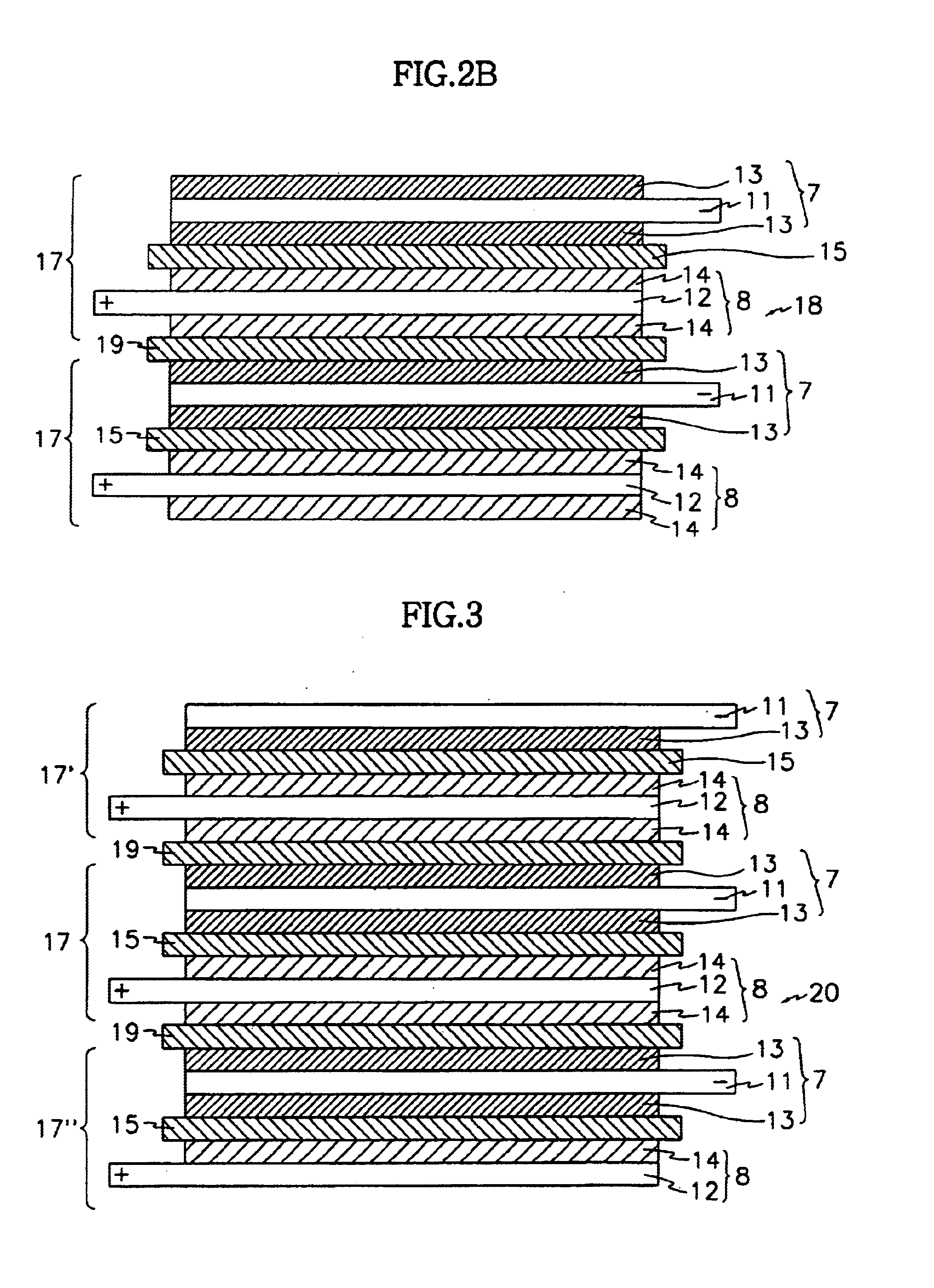Stacked electrochemical cell
a technology of electrochemical cells and stacking, applied in the field of electrochemical elements, can solve the problems of battery flammability and explosives, lithium ion polymer batteries, and relatively low capacity of lithium ion polymer batteries, and achieve the effect of efficient use of space and easy manufactur
- Summary
- Abstract
- Description
- Claims
- Application Information
AI Technical Summary
Benefits of technology
Problems solved by technology
Method used
Image
Examples
example 1
[0044]Preparing a Stacked Cell where a Full Cell is a Basic Unit
[0045](Preparing a Cathode)
[0046]LiCoO2:carbon black:PVDF, of which the weight ratio was 95:2.5:2.5, was dispersed in NMP in order to prepare slurry, and then the slurry was coated on an aluminum foil. After sufficiently drying at 130° C., the cathode was prepared by pressing.
[0047]A cathode that was to be placed in the outermost side of the outermost full cell was prepared by coating the slurry on a single side of aluminum foils. That is, the cathode has a cathodic material coated on a single side of the aluminum cathode current collector. A cathode of the full cell that was to be placed in the inner side was prepared by coating the slurry on both sides of aluminum foil. In this case, the cathode has a cathodic material coated on both sides of the aluminum cathode current collector. The thickness of the single-side coated cathode was 105 μm and the thickness of the both-side coated cathode was 140 μm.
[0048](Preparing a...
example 2
[0062]Preparing a Stacked Cell where a Bicell is a Basic Unit
[0063](Preparing a Cathode)
[0064]Each cathode was prepared according to the method same as the above example 1.
[0065]A cathode of the bicell that was to be placed in the inner side was prepared by coating the slurry on both sides of aluminum foil. That is, the cathode has a cathodic material coated on both sides of the aluminum cathode current collector. The thickness of the both-side coated cathode was 140 μm.
[0066](Preparing an Anode)
[0067]Each anode was prepared according to the method same as the above example 1.
[0068]Anodes that were to be placed in the outermost sides of the outermost full cell were prepared by coating the slurry on a single side and on both sides of copper foils. That is, the anodes have an anodic material coated on a single side and on both sides of the copper anode current collector respectively. An anode of the full cell that was to be placed in the inner side was prepared by coating the slurry o...
PUM
| Property | Measurement | Unit |
|---|---|---|
| thickness | aaaaa | aaaaa |
| thickness | aaaaa | aaaaa |
| thickness | aaaaa | aaaaa |
Abstract
Description
Claims
Application Information
 Login to View More
Login to View More - R&D
- Intellectual Property
- Life Sciences
- Materials
- Tech Scout
- Unparalleled Data Quality
- Higher Quality Content
- 60% Fewer Hallucinations
Browse by: Latest US Patents, China's latest patents, Technical Efficacy Thesaurus, Application Domain, Technology Topic, Popular Technical Reports.
© 2025 PatSnap. All rights reserved.Legal|Privacy policy|Modern Slavery Act Transparency Statement|Sitemap|About US| Contact US: help@patsnap.com



